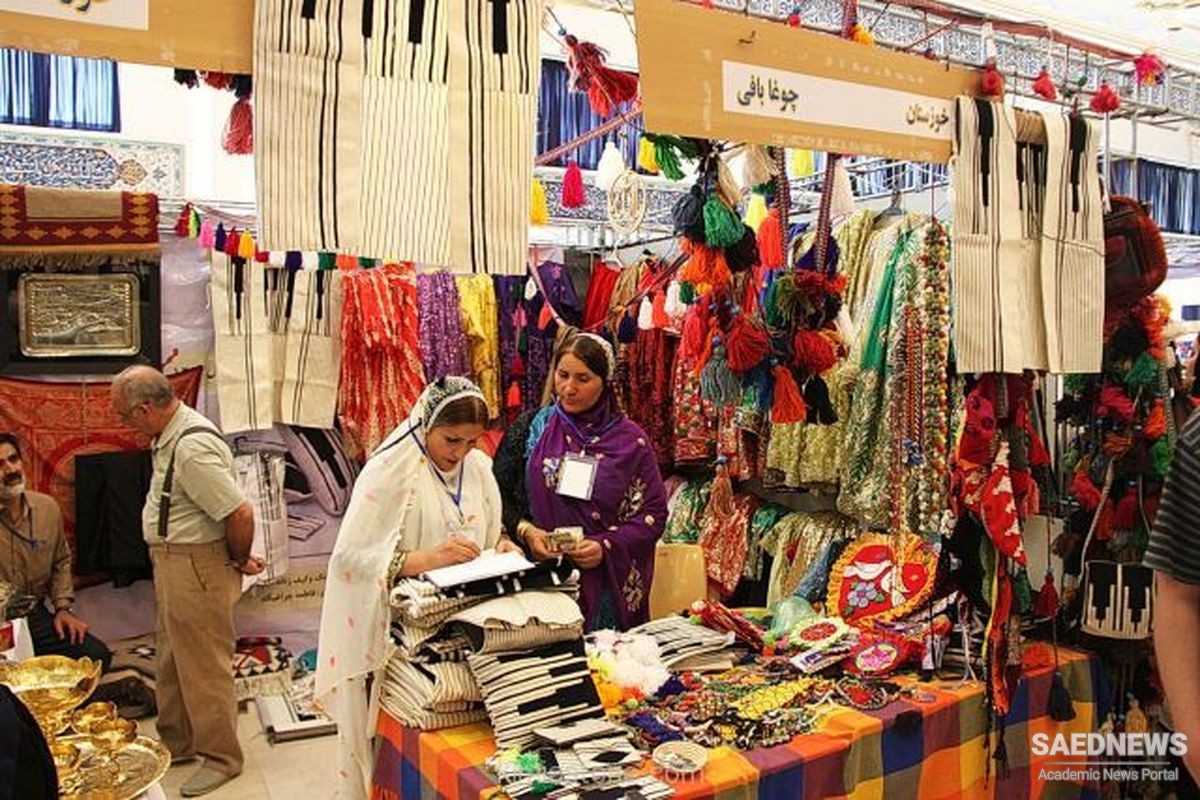In the past, a kind of Ihram fabric was produced without any pattern and it was used as the clothing of Ihram during the Islamic pilgrimage of Hajj. But today Ihrami fabrics are weaved in different sizes and in the forms of prayer rugs, doormats, bed covers, bags and similar products. In the province of Yazd, a fabric named “Harami” and in Ilam, another kind named “Ihram” are weaved that, in terms of material, design, pattern, size and color are different from Ihrami of Khuzestan. The motifs, colors and design of Ihrami fabrics are created from the memory of the weaver. There is no premade design involved and they are usually created based on a general form. Due to the technique of making of Ihrami, no cursive pattern can be applied to it, but they are geometric and symmetrical. The most common motifs of Khuzestan Ihrami are diamonds, pines, double diamonds, simple strips, “Tikhorusi” strips, “Ajorkari” (brick), butterfly, “Kheshti” (Adobe), “Arusaki” (doll), and “Busehye Do Mahi” (two fishes kissing). The motifs of Ihrami are somehow representative of motifs of potteries from Susa civilization from hundreds of years ago.
Bright and shiny colors such as red, yellow, blue, green and white are common in Ihrami. Today most of these products are seventy in one hundred and ten centimeters or one hundred and fifty in one hundred centimeters. The traditional textile machine is installed and fixed in the workshop, with the warp yarns arranged horizontally. Like many other textile machines, most parts are made from wood. Some of the tools that are used in the process are: 1. “Dafeh” or comb, that is used to pack the wefts 2. “Lit”, a rectangular piece made of plant stalks and the wrap yarns passing through it 3. “Balul” or bobbin, which is a short and thin pipe around which the weft is twisted 4. “Masureh Tabi” or bobbin winder, that consists of a big and a small wheel. When the bigger wheel is turned, the smaller wheel turns too and the yarn is twisted around the bobbin. Cities of Shushtar, Dezful, Behbahan, Susangerd and Masjed Soleiman are some of the most important centers of Ihrami.


 Shawl of Kurdistan
Shawl of Kurdistan














































